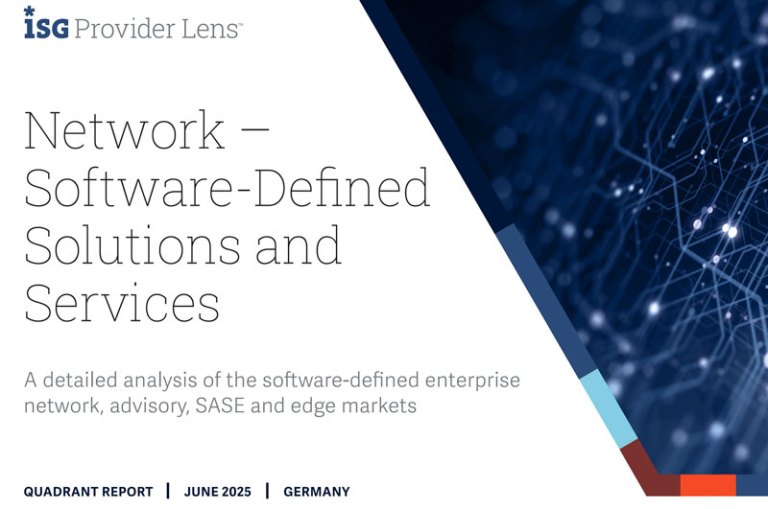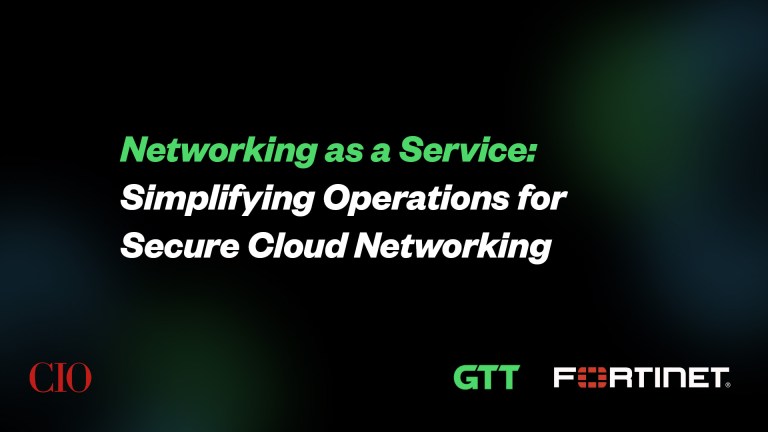Executing a comprehensive network transformation strategy has never been more critical to the competitiveness of your enterprise. When selecting and implementing a solution that advances your network transformation, why is it important to also consider including a professional service bundle? The short answer is this: You’re likely to benefit from professional services if your enterprise network is larger than a dozen or so sites, spans more countries than you have on-site IT staff in, is combining several different products into one service, has any bespoke elements, and/or your business model isn’t centered on being a network operator.
Care for a bit more detail? Read on for my take on when and how it’s right to take professional services with your network services.

What’s Available?
Most network providers, such as GTT, offer three types of enterprise-grade professional services: Project Management, Technical Management and Service and Operational Management. The additional specialized resources offered with these categories of professional services are intended to provide more “white glove” support to align the solution design, the implementation and the ongoing service experience with your business need.
Technical Managers are there to ensure that a service and solution can be technically delivered, and remain up and running. They are experts in the technologies in play, and how these interact with the other elements that form part of any given service. Their expertise can be useful from the initial design stage, right through to ongoing patching and hardware management post-implementation.
Project Managers function as your single point of contact during the delivery phase. Any successful service deployment needs to take a balanced approach, to ensure that planning is both robust and flexible, so that solution transition and optimization are fulfilled with the highest degrees of accuracy and detail. At the same time, the project also has to take into account any critical timescales, costs, quality, and risk or issues management. The project manager works closely with your own delivery team to ensure continuous alignment. Once a project has been fully delivered, Project Management also assures a managed handover to the ongoing support functions.
Service and Operational Managers understand how clients experience our products and services. Their job is to consider the entire customer journey and make it the best possible experience by ensuring that the project is delivered in line with the agreed-upon contract, is on time, and meets customer expectations. Once a service is delivered as contracted, Service Managers continue to track and report how the provider performs for the duration of the contract. Service Management deals with this cross-functional challenge by viewing each project from the customer’s perspective and managing resources and input to generate the desired results. Service managers can support everything from project management, to billing inquiries and challenges, to custom reporting and reviews.
Is Your Need Simple or Complex?
If you are only taking a few services from a small number of network providers, and your network architecture isn’t very complicated, you will likely find it most efficient to manage in-house. A simple contract and setup can, in the main, rely on a standard support model from your chosen network service provider, assuming you are supported by a Network Operations Center for implementation and any ticket resolution over time.
However, the more complex your requirement is, the more professional services start to make sense. For example, as your business changes, so might the presence it has around the world. A provider with a multinational footprint can grow and scale services as your business expands, and its managed services expertise may become increasingly valuable as a trusted source for input and advice in delivering the best possible network performance and security for your users and customers.
What Skills Do You Have Internally?
The influence of technological change on network transformation strategy is accelerating, and it can be hard to keep up with the necessary skills internally to support it. Many businesses struggle to take full advantage of the agility that cloud networking brings due to a lack of in-house skills.
An independent survey at the end of 2019 found just under half (45%) of ICT decision-makers believed they had the skills to implement SD-WAN in their enterprise network. SD-WAN has very quickly established itself as a key network transformation technology to support increased cloud adoption, but the skills to manage the technology take time to build up in-house, and can be expensive to hire. In addition, complex deployments of new technologies into multiple environments can put a strain on internal IT resources, which can, in turn, increase business risk.
Rather than diverting your valuable resources away from core business processes, professional services offer the choice to simplify your operational tasks by entrusting them to a provider. It becomes the provider’s job to support and deliver the services that they have the most expertise in, freeing up your in-house resources to focus on your own end-customers.
At GTT, we work with our clients to translate their traditional business operations for a cloud-based environment, developing their service management capabilities, and helping them implement new ways of working. Our high-quality project teams have the technical insight and service operational competence to deliver well-defined change programs. These can help our customers achieve their target operating states, so that their operations keep pace with technology transformation. They also ensure the software is patched or versions are updated, that hardware is replaced, and that the overall estate life cycle is well-managed. These problems are common in our industry, and that’s why we follow ITIL as a best practice. (More on this further down).
How Tight Is Your Project Timeline?
Delivering on time and to (or, under!) budget is a minefield most IT departments navigate on a daily basis. When faced with a brief from management that they want the world, and they’d like it yesterday, the benefits of bringing technical management services in straight away is often overlooked.
This is a missed opportunity, as it can be highly worthwhile to involve technical experts already in the earliest stages of defining the solution for a complex use case. Every service a provider such as GTT offers, be it a large-scale WAN, SD-WAN, direct cloud connectivity, hybrid compute, etc., will involve comprehensive technical designs. These designs need to be created at different levels, and with different Statements-of-Work, to ensure that whatever is agreed upon contractually is set up and executed accordingly and that it works. If technical managers are involved as early as possible, they can help qualify that your requirements fit with the capabilities offered by the service provider. The key objective is to make sure everything in the plan is indeed viable. For us, this means we can implement it, deliver it and support it in-life after implementation to meet your expectations and our commitment.
As you get further down the line with your implementation, you don’t want to be in a position where you’re still trying to scope your requirements and attempting to match those with the service provider’s capabilities to ensure a fit. Sometimes, just one mistake can create a tricky delta to bridge. Bringing in expertise early can save time and aggravation later on.
Your tight timescales will also benefit from access to a provider’s experience in having deployed many solutions similar to yours before. For example, if you’re deploying a new global SIP Trunking solution, your Technical Manager might push you to start your user audit much earlier than you would’ve done yourself, as they know how long it can take to audit hundreds, or even thousands, of employees across many locations.
Finally, as much as any of us love reading a good report, creating them quickly, and meeting the needs of different audiences, can require an inordinate amount of time. A Service Manager can be highly effective at closing the gap from the admin and engineering levels and translating that for higher-level audiences inside your business. They can bridge the communication divide in terms of cascading information and helping to ensure that the senior management in your business has proper visibility of the service being delivered.
Service Management’s investment in the success of the account applies equally in good times, and when things go wrong. The Service Manager is there to take onboard any problem escalations, run them internally and handle any third-party suppliers on the customer’s behalf. Ensuring transparency and visibility for all stakeholders can feel like half the battle when trying to keep an issue under control, and the ongoing reporting and status updates provided by Service Management can help accelerate and support critical communication lines in pressurized situations.
Are You Ready for Co-Creation?
In my experience, the biggest impact professional services can have on the successful execution of your network transformation strategy is to help you continually ensure the best fit between your business needs and the service provider’s capabilities to meet your strategic aims. If you consider the life of a contract, this can be anywhere from 12 months to five years or more. Your business can change a great deal in that space of time, and so can the capabilities of your service provider.
A core value-add for professional services is to work with you toward continuous service improvement. At GTT, we follow the international ITIL standards, working to implement industry best practices together with our customers. Successful implementation is only the beginning of the service journey. Key ITIL activities come into play when you take the time to keep revisiting the processes you’ve established, find patterns in your different service requests or incidents, and analyze shifts and trends in your business’s network traffic, with the aim of continuously identifying areas of improvement and acting on them.
When this process is working really well, it can get to a stage where they stay consistently attuned to the original contract and an ongoing process emerges, based on co-creation between your in-house and service management teams. Together, and in the context of your evolving strategic objectives, you will continuously review your estate, your connections, and any new technologies that become available in dialogue with the service provider. Reality checks with an experienced service provider can be well worthwhile, especially when technology innovation moves as fast as it does. The relationship and governance model you have in place through professional services enables you to pivot and adjust whenever needed, designing and building out the network foundation for all your digital business infrastructure.
Finding Value
Enterprise networking is often a good area to apply professional services management to ensure the execution of an effective network transformation strategy and allow scarce IT resources to focus on other initiatives that drive your digital business forward. Although connectivity is more crucial than ever to today’s digital businesses, it’s rarely an inherent part of the products and services you need to develop and improve in order to deliver excellence and innovation to enterprise users and end customers.
Including professional services in a network solution bundle ensures that deliveries will remain on track and generate ongoing value for your business, through the continuous process improvements that best support your organization’s digital journey.
About GTT
GTT connects people across organizations, around the world, and to every application in the cloud. Our clients benefit from an outstanding service experience built on our core values of simplicity, speed, and agility. GTT owns and operates a global Tier 1 internet network and provides a comprehensive suite of cloud networking services. We also offer a complementary portfolio of managed services, including managed SD-WAN from leading technology vendors.











